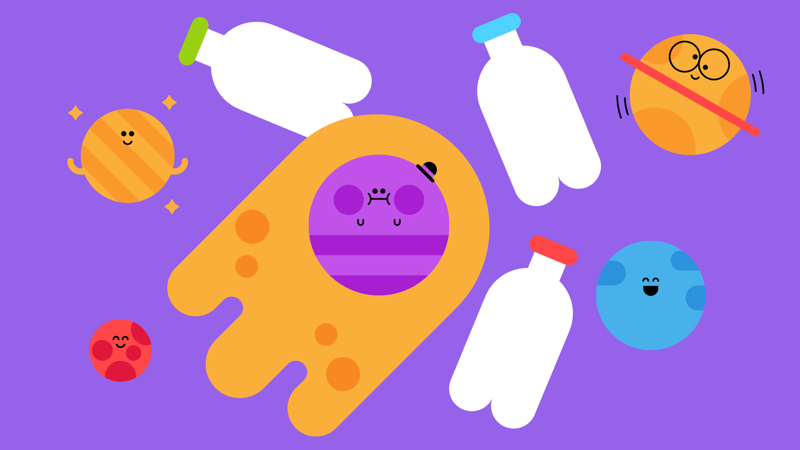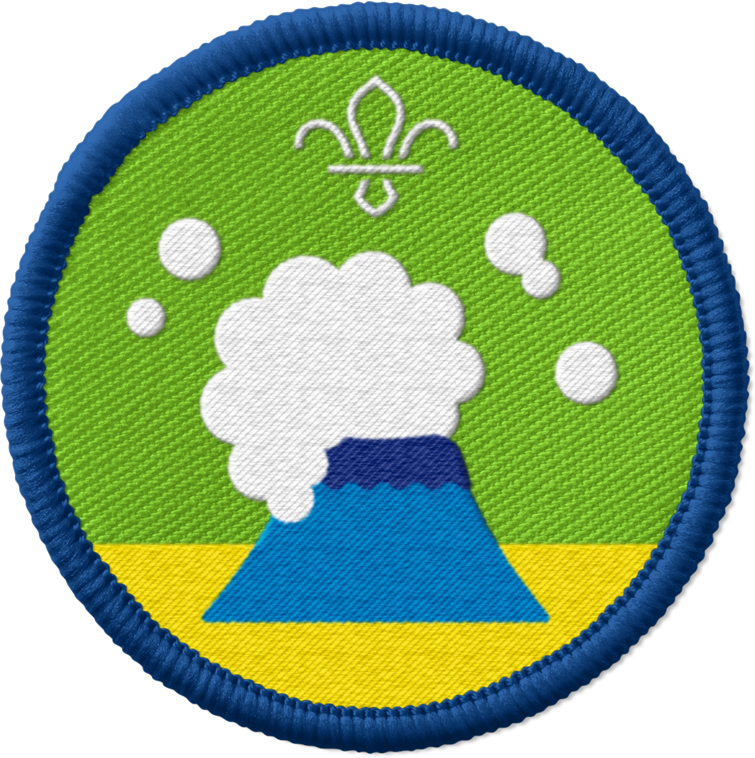
Sensory bottles
You’ll need
- Food colouring
- Sticky tape
- Something to protect surfaces (for example, newspaper or tablecloths)
- Clean, empty plastic bottles (500ml)
- Vegetable oil
- Clear hand wash
- A selection of different size and weight materials to fill the bottles (like shells, beads, scrabble letters, biodegradable glitter)
Before you begin
- You may want to run this experiment as one of a few bases. If you’re running two or three experiments at the same time, put the equipment each needs on the table and make sure there’s an adult at each table.
- Cover tables with newspaper or wipe down tablecloths – this could get messy!
- You can use baby oil instead of vegetable oil.
- It’s up to you what you put in the bottles. You could also try pebbles, paperclips, marbles, buttons, sweet wrappers, or Lego.
- Plan ahead and let everyone know what equipment they’ll need to do this activity online at home. You could think about safely delivering the equipment to group members if it’d be appropriate and manageable for your group.
- Check out the advice on using Zoom and other popular digital platforms and the guidance on being safe online.
Prepare the bottles
- The person leading the experiment should give everyone a bottle. Everyone should use the jug to fill the bottle half full of water.
- Everyone should top up their bottle with handwash, vegetable oil, washing up liquid, or a mixture of them. They could also add some food colouring.
The mixture of liquids people use will change the way their bottle looks and moves. People could screw the lid on and give the bottle a shake as they add different things, to see if it’s working as they want it to.
Fill the bottles
- Everyone should choose items to add to their bottle. They should try to choose things that are different shapes, sizes, and weights so they move at different speeds when they shake their bottle.
- Everyone should carefully drop or pour their chosen items in.
- Once everyone’s happy with their bottles, they should screw the lids on tightly. The person leading the experiment should help everyone make sure their lids are tight.
You may want to secure the lid with tape.
- Everyone should shake their bottle and watch how the different things inside mix, float, and sink.
Reflection
This activity used a lot of skills (and some science) to create something that’s both beautiful and useful. Everyone should show each other their bottles and take some time to talk about how different people’s bottles are similar and different. What did people choose to fill their bottles with, and why did they choose those things? How did the different liquids affect the water? Oil is less dense than water, so however much people shake their bottles the oil will always try to rise to the top. Adding washing up liquid creates bubbles on top of the water, while hand wash usually creates bubbles within the water. What about food colouring? Did all the liquids change colour in the same way? Food colouring won’t mix with oil—if you see drops of colour in the oil, they’re trapped bubbles of water.
Everyone should shake and turn their bottles and follow the shapes inside. Which materials move the fastest and which move the slowest? What makes the items different? People may think about their shape, their size, what they’re made from, and how heavy they are. If everyone turns their bottles upside down, some items will probably sink straight to the bottom while others bob down slowly. Does anyone know why?
Safety
All activities must be safely managed. You must complete a thorough risk assessment and take appropriate steps to reduce risk. Use the safety checklist to help you plan and risk assess your activity. Always get approval for the activity, and have suitable supervision and an InTouch process.
- Glue and solvents
Always supervise young people appropriately when they’re using glue and solvent products. Make sure there’s plenty of ventilation. Be aware of any medical conditions that could be affected by glue or solvent use and make adjustments as needed.
- Rubbish and recycling
All items should be clean and suitable for this activity.
- Water games and activities
Be careful when doing activities with, in, or near water. Check surfaces and reduce the risk of slipping where possible. Make sure you have appropriate supervision for this activity.
You could theme your bottles and use them to help tell stories. For example, you could add twigs, straw, and plastic animals to tell the story of the Three Little Pigs.
Make it accessible
All Scout activities should be inclusive and accessible.

